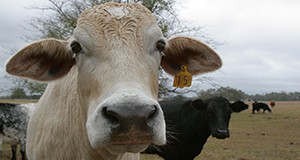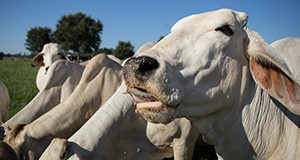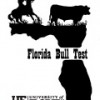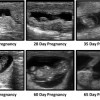 The economic success of beef cow-calf operations depends on the production of one healthy calf per cow per year. To achieve this goal, cow-calf producers need to overcome several obstacles related to the cow, bull, and offspring. Over the last four decades, several advances in reproductive biotechnologies, such as artificial insemination (AI), synchronization of estrus, and fixed-time AI (TAI), have allowed producers to improve the genetic traits of their cattle and shorten the lengths of both the breeding season and subsequent calving season, which can lead to increased overall profitability of cow-calf production systems. This 5-page fact sheet discusses benefits of synchronization and TAI use, obstacles that hinder adoption of reproductive biotechnologies, objectives of the Beef Reproduction Task Force, and factors that can affect the success of TAI programs. Written by Vitor R. G. Mercadante, Darren D. Henry, Francine M. Ciriaco, Pedro L. P. Fontes, Nicky Oosthuizen, and G. Cliff Lamb, and published by the UF Department of Animal Sciences, January 2016.
The economic success of beef cow-calf operations depends on the production of one healthy calf per cow per year. To achieve this goal, cow-calf producers need to overcome several obstacles related to the cow, bull, and offspring. Over the last four decades, several advances in reproductive biotechnologies, such as artificial insemination (AI), synchronization of estrus, and fixed-time AI (TAI), have allowed producers to improve the genetic traits of their cattle and shorten the lengths of both the breeding season and subsequent calving season, which can lead to increased overall profitability of cow-calf production systems. This 5-page fact sheet discusses benefits of synchronization and TAI use, obstacles that hinder adoption of reproductive biotechnologies, objectives of the Beef Reproduction Task Force, and factors that can affect the success of TAI programs. Written by Vitor R. G. Mercadante, Darren D. Henry, Francine M. Ciriaco, Pedro L. P. Fontes, Nicky Oosthuizen, and G. Cliff Lamb, and published by the UF Department of Animal Sciences, January 2016.
http://edis.ifas.ufl.edu/an324
Tag: Darren D. Henry
The Economic Impact of Feed Efficiency in Beef Cattle
 A well-run, profitable business is usually more efficient than its competitors. In the case of the beef cattle industry, competition can come from two sources: other producers who sell similar classes of cattle, and other protein-producing species, such as pork and poultry. Measuring efficiency across the entire integrated beef system can be difficult due to the differing classes of cattle, breed differences, and ways in which the biological systems interact. There are a multitude of measures of efficiency in beef production, with feed efficiency being one of the most economic. This 3-page fact sheet is a major revision that covers feed to gain ratio and residual feed intake in beef cattle. Written by Travis D. Maddock, Darren D. Henry, and G. Cliff Lamb, and published by the UF Department of Animal Sciences. Original publication date: May 2009. Revised October 2015.
A well-run, profitable business is usually more efficient than its competitors. In the case of the beef cattle industry, competition can come from two sources: other producers who sell similar classes of cattle, and other protein-producing species, such as pork and poultry. Measuring efficiency across the entire integrated beef system can be difficult due to the differing classes of cattle, breed differences, and ways in which the biological systems interact. There are a multitude of measures of efficiency in beef production, with feed efficiency being one of the most economic. This 3-page fact sheet is a major revision that covers feed to gain ratio and residual feed intake in beef cattle. Written by Travis D. Maddock, Darren D. Henry, and G. Cliff Lamb, and published by the UF Department of Animal Sciences. Original publication date: May 2009. Revised October 2015.
http://edis.ifas.ufl.edu/an217
Potential Bull Buyers Perceive Increased Value to their Operations When Purchasing Bulls from the Florida Bull Test
 Since its beginning in 2000, the Florida Bull Test has been under constant evolution to achieve its goal of helping producers select high-quality sires, thereby improving production and profitability of beef cattle producers in Florida and the Southeast United States. A survey of potential buyers before the 2014 sale succeeded in identifying which characteristics of bulls are most important to buyers purchasing bulls: purchasing bulls from the Florida Bull Test increases the value of calves sired by improving performance, genetics, and feed efficiency of their herds. This 3-page fact sheet was written by Vitor R. G. Mercadante, Darren D. Henry, Francine M. Ciriaco, Paula M. Mercadante, Tessa Schulmeister, Nicolas DiLorenzo, and G. Cliff Lamb, and published by the UF Department of Animal Sciences, November 2014.
Since its beginning in 2000, the Florida Bull Test has been under constant evolution to achieve its goal of helping producers select high-quality sires, thereby improving production and profitability of beef cattle producers in Florida and the Southeast United States. A survey of potential buyers before the 2014 sale succeeded in identifying which characteristics of bulls are most important to buyers purchasing bulls: purchasing bulls from the Florida Bull Test increases the value of calves sired by improving performance, genetics, and feed efficiency of their herds. This 3-page fact sheet was written by Vitor R. G. Mercadante, Darren D. Henry, Francine M. Ciriaco, Paula M. Mercadante, Tessa Schulmeister, Nicolas DiLorenzo, and G. Cliff Lamb, and published by the UF Department of Animal Sciences, November 2014.
http://edis.ifas.ufl.edu/an313
Understanding Pregnancy Diagnosis in Beef Cattle
 Because 55 to 70 percent of the input costs associated with a beef cattle operation are related to nutrition, culling open (non-pregnant) cows after the breeding season can save as much as $200 per head that can be diverted to the purchase or development of replacement females, sire selection, increased nutritional management, and other management-related costs. Pregnancy diagnosis can be performed simply during vaccination or at the time of weaning. There are three practical methods: rectal palpation, transrectal ultrasonography, or blood test. This 5-page fact sheet was written by G. Cliff Lamb, Darren D. Henry, Vitor R. G. Mercadante, and Doug E. Mayo, and published by the UF Department of Animal Sciences, November 2014.
Because 55 to 70 percent of the input costs associated with a beef cattle operation are related to nutrition, culling open (non-pregnant) cows after the breeding season can save as much as $200 per head that can be diverted to the purchase or development of replacement females, sire selection, increased nutritional management, and other management-related costs. Pregnancy diagnosis can be performed simply during vaccination or at the time of weaning. There are three practical methods: rectal palpation, transrectal ultrasonography, or blood test. This 5-page fact sheet was written by G. Cliff Lamb, Darren D. Henry, Vitor R. G. Mercadante, and Doug E. Mayo, and published by the UF Department of Animal Sciences, November 2014.
http://edis.ifas.ufl.edu/an314